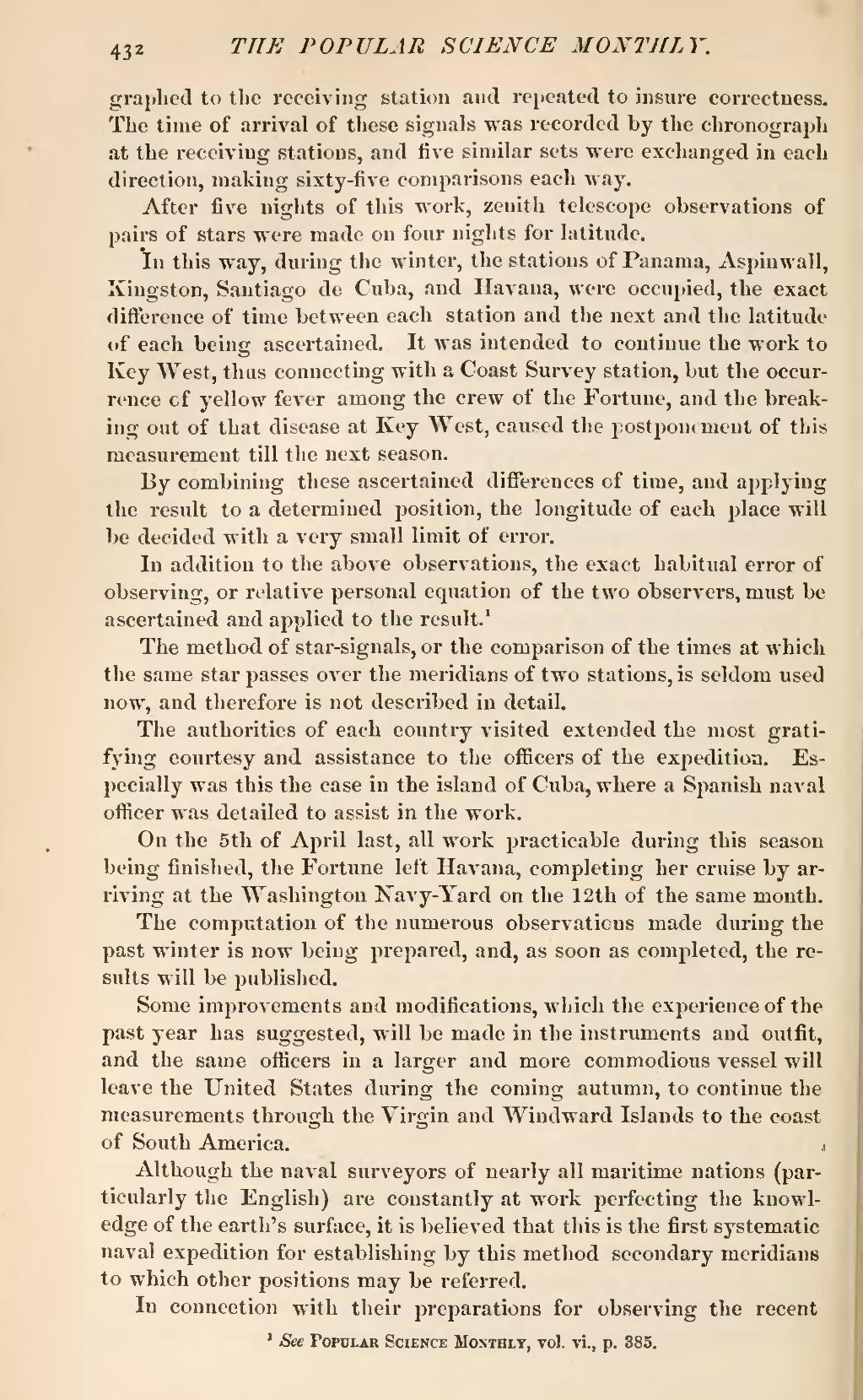graphed to the receiving station and repeated to insure correctness. The time of arrival of these signals was recorded by the chronograph at the receiving stations, and five similar sets were exchanged in each direction, making sixty-five comparisons each way.
After five nights of this work, zenith telescope observations of pairs of stars were made on four nights for latitude.
In this way, during the winter, the stations of Panama, Aspinwall, Kingston, Santiago de Cuba, and Havana, were occupied, the exact difference of time between each station and the next and the latitude of each being ascertained. It was intended to continue the work to Key West, thus connecting with a Coast Survey station, but the occurrence of yellow fever among the crew of the Fortune, and the breaking out of that disease at Key West, caused the postponement of this measurement till the next season.
By combining these ascertained differences of time, and applying the result to a determined position, the longitude of each place will be decided with a very small limit of error.
In addition to the above observations, the exact habitual error of observing, or relative personal equation of the two observers, must be ascertained and applied to the result.[1]
The method of star-signals, or the comparison of the times at which the same star passes over the meridians of two stations, is seldom used now, and therefore is not described in detail.
The authorities of each country visited extended the most gratifying courtesy and assistance to the officers of the expedition. Especially was this the case in the island of Cuba, where a Spanish naval officer was detailed to assist in the work.
On the 5th of April last, all work practicable during this season being finished, the Fortune left Havana, completing her cruise by arriving at the Washington Navy-Yard on the 12th of the same month.
The computation of the numerous observations made during the past winter is now being prepared, and, as soon as completed, the results will be published.
Some improvements and modifications, which the experience of the past year has suggested, will be made in the instruments and outfit, and the same officers in a larger and more commodious vessel will leave the United States during the coming autumn, to continue the measurements through the Virgin and Windward Islands to the coast of South America.
Although the naval surveyors of nearly all maritime nations (particularly the English) are constantly at work perfecting the knowledge of the earth's surface, it is believed that this is the first systematic naval expedition for establishing by this method secondary meridians to which other positions may be referred.
In connection with their preparations for observing the recent
- ↑ See Popular Science Monthly, vol. vi., p. 385.
